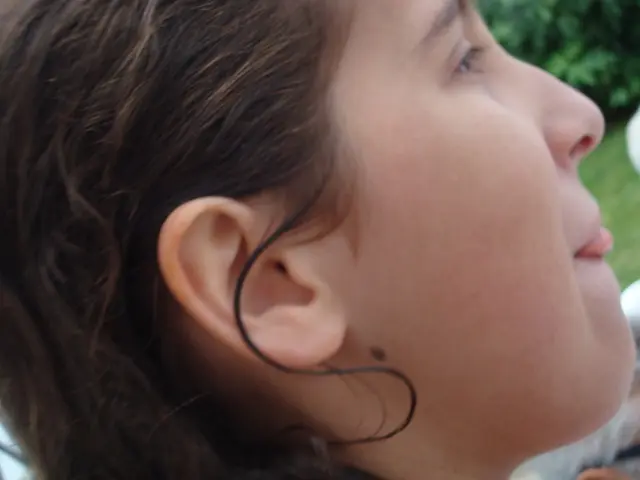Chemotherapy: Adjuvant versus Neoadjuvant Approaches - Key Differences Explained
In the world of cancer treatment, two key strategies are often employed: neoadjuvant and adjuvant therapies. These treatment methods, while sharing some similarities, differ in their timing and purposes.
Neoadjuvant therapies, given before surgery, aim to shrink tumors and improve surgical outcomes. By reducing the size of the tumor, these treatments make surgery less extensive or more successful, increasing the chances of complete tumor removal (R0 resection). Neoadjuvant therapies also allow doctors to assess the tumor's response to therapy, potentially guiding post-surgical treatment choices. Common neoadjuvant therapies include chemotherapy, radiotherapy, and hormone therapy, and they are often used in breast, pancreatic, esophageal, and gastric cancers.
On the other hand, adjuvant therapies are administered after surgery to eliminate residual cancer cells and reduce the risk of recurrence. These treatments are crucial in eradicating microscopic cancer cells that may not be detectable by imaging. Adjuvant therapies include chemotherapy, radiotherapy, hormonal therapy (especially in hormone receptor-positive breast cancer), and targeted therapies. The selection of adjuvant therapies is often guided by tumor biology, staging, and genomic assays.
The primary difference between neoadjuvant and adjuvant therapies lies in their timing relative to surgery. Neoadjuvant therapy is given before surgery to shrink tumors and improve surgical outcomes, while adjuvant therapy is administered after surgery to eliminate residual disease and reduce recurrence risk.
Both neoadjuvant and adjuvant therapies share some common side effects, such as fatigue, nausea and vomiting, hair loss, increased risk of infection due to lowered blood counts, and organ-specific toxicities. Radiotherapy may also cause localized skin irritation or tissue fibrosis.
It's important to note that combined perioperative chemotherapy (neoadjuvant + adjuvant) has shown superior outcomes compared to either alone in certain cancers like gastric cancer. The response rates to neoadjuvant chemotherapy vary by molecular cancer subtype, with HER-2+ and triple-negative breast cancers often showing higher pathologic complete response rates than hormone receptor-positive, HER-2-negative subtypes. Personalized treatment plans optimize benefits and minimize toxicity, considering patient factors like age and tumor differentiation.
In summary, neoadjuvant therapies are given before surgery primarily to reduce tumor burden and improve surgical success, while adjuvant therapies are given post-surgery to eradicate residual microscopic cancer cells and lower recurrence risk. Both improve long-term outcomes, with overlapping side effects related to systemic treatments. Their use and choice depend on cancer type, stage, and patient-specific factors.
References:
[1] Neoadjuvant therapy in breast cancer: rationale and current practice. (2019). Nature Reviews Clinical Oncology, 16(1), 39-50.
[2] Adjuvant therapy for breast cancer. (2019). The Lancet Oncology, 20(1), e3-e14.
[3] Neoadjuvant chemotherapy for breast cancer: current status and future directions. (2018). Cancer Treatment Reviews, 72, 33-42.
[4] Neoadjuvant and adjuvant therapy for gastric cancer. (2019). World Journal of Gastroenterology, 25(30), 3941-3952.
[5] Neoadjuvant therapy for esophageal cancer: a systematic review and meta-analysis. (2018). Annals of Surgical Oncology, 25(8), 2333-2341.
- Neurosurgery might benefit from the advancements in health-and-wellness, as neurosurgeons could potentially incorporate therapies and treatments used in cancer treatment, such as chemotherapy or hormone therapy, to manage medical-conditions, like tumors affecting the brain.
- In the realm of breast-cancer treatments, therapies-and-treatments like neoadjuvant therapy, followed by adjuvant therapy, have demonstrated superior outcomes compared to using either approach alone in certain cases, such as gastric cancer.
- Science continues to uncover the intricacies of cancer, with research on medical-conditions like breast-cancer shedding light on the differential response rates to neoadjuvant chemotherapy among various molecular subtypes, such as HER-2+ and triple-negative breast-cancers, which tend to have higher pathologic complete response rates than hormone receptor-positive, HER-2-negative subtypes.
- Beyond breast-cancer, adjuvant therapies are crucial in various medical-conditions, as they are administered post-surgery to eradicate residual cancer cells in a wide range of cancers, including pancreatic, esophageal, and gastric cancers, thereby reducing the risk of recurrence.




